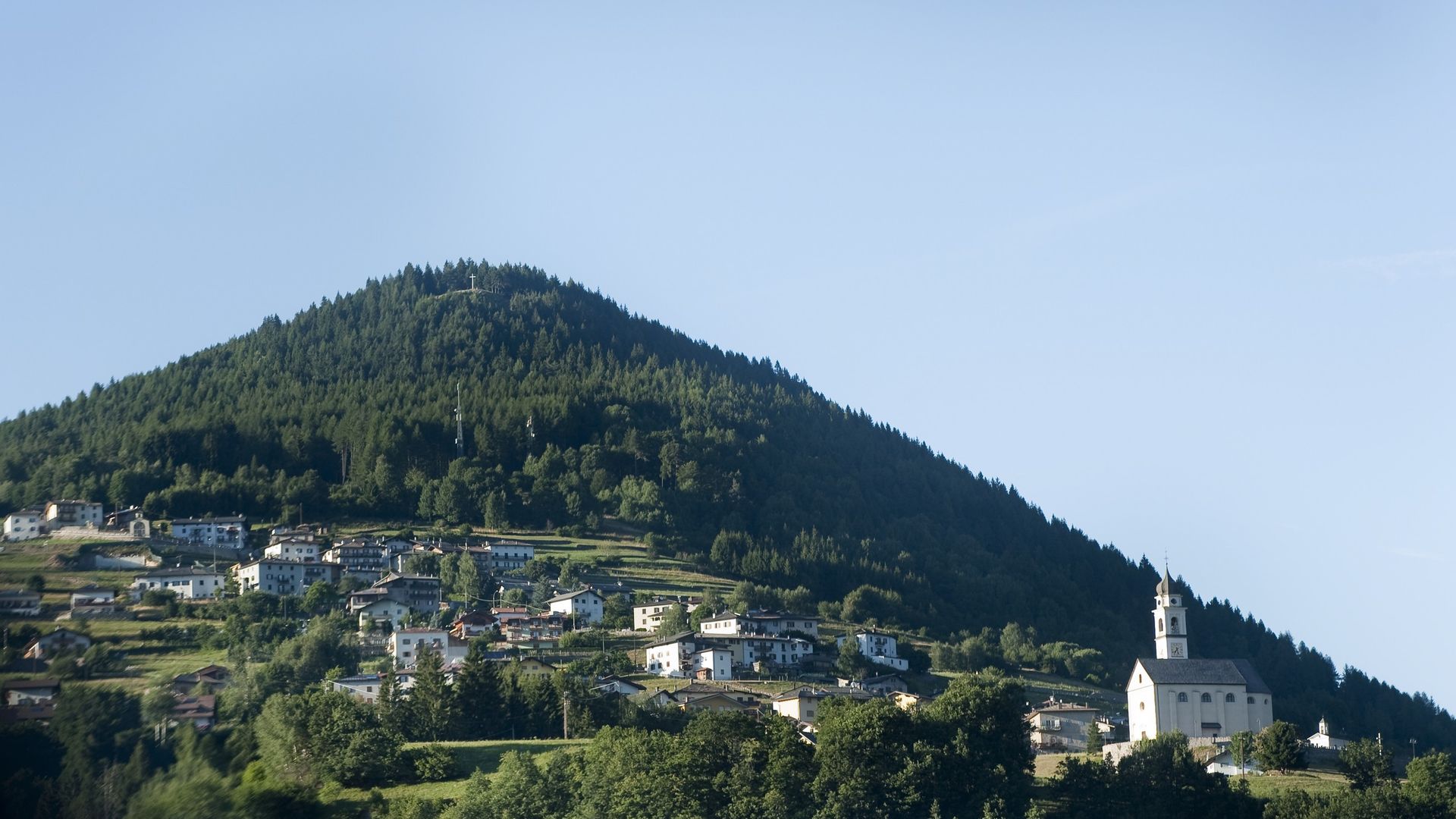
Bedollo
Nestled between the small Buse Pond and the Piazze Lake
The municipal territory of Bedollo covers the northern part of the Piné Plateau, and is named after the birch tree, locally known as Bedòl.
The area is crossed by the Regnana and Brusago rivers. The municipality has 4 hamlets, each in turn with several villages. The small Buse lake and Piazze Lake are located in the area, and their beautiful beaches are a great tourist attraction in the summer months, for sunbathing and water sports. In recent decades, the tourist industry has developed considerably and several hotels and other types of accommodation facilities have been built.
Bedollo has been carrying on for years the restoration and enhancement of the Pezzata Mochena goat breed as well as, also through the breeding of these animals, the recovery of uncultivated land. The maintenance of the landscape and the km0 production of gastronomic excellence (dairy products, cured meats, honey and derivatives...) are identifying elements of the Bedolera community for a sustainable and synergistic development of the territory.
Read more
In the municipality of Bedollo, near the Redebus Pass, smelting furnaces dating back to the Bronze Age have been found (Acqua Fredda Archaeological Area). The size of the site and the complexity of the process seems to indicate the presence of a stable human settlement near it.
In the French occupation of 1796 /97 the Bedollo territory was the scene of more clashes between Napoleonic troops and Trentino-Tyrolese militias. On February 3 and 27, 1797, militias from Sover and Fiemme, under the command of captains Antonio Lorenzo Sighel and Domenico Santuari, in a victorious clash at Colbis near Brusago, repulsed the French. Some soldiers of the Napoleonic army who died during the October 1796 battle are buried in Piazze, in an area on Doss dell'Oselera.
Artistic monuments: the present church of S. Osvaldo, which stands on a plateau in the locality of Villa di Bedollo, is reported to have been consecrated by Olao Magno archbishop of Upsala on August 17, 1546. In 1759 the church was remodeled and assumed its present appearance with work by Claudio Carneri. The stucco work adorning the capitals of the pilasters, chancel, vault, entablature, and frescoes was done by Bartolomeo Bianchi of Brienno with plaster from the quarries of Castello di Fiemme. In 1874 Filippo Tornaghi of Monza built the organ, which has been restored several times. Next to the church is the bell tower with its characteristic onion-shaped roof also designed by Claudio Carneri in 1772.
Highlights of Bedollo
A town beloved for its panoramic views of the plateau's lakes and for its dining options; it gets its name from the birch tree locally known as Bedòl. Also in the Bedollo area, on the road to the Redebus Pass, is the Acqua Fredda archaeological area, evidence of ancient metalworking activity
descrizione semplice come arrivare
By car
Brenner Motorway (A22 exit Trento South or North), state road 12 of Abetone and Brenner from Verona or Bolzano; state road 47...
titolo portlet box scuro pagina Outdoor
Where to eat after a good hike
There is nothing better than a refreshing lunch at the end of a trekking.
...
descrizione semplice Uffici turistici
Trento | Dante Square
Annual opening
Piazza Dante, 24 - 38122 Trento
Tel. +39 0461 216000 - fax +39 0461 216060
info@trento.info...
esempi di as xml: xml serveResource con templateId (chiave)
esempi di as json: json serveResource con templateId (chiave)
esempi di as json e siteId: json serveResource con siteid











